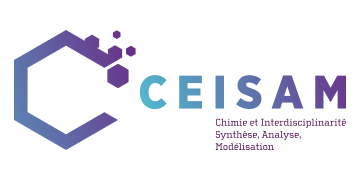
InducedFluo - Vers les protéines dont la fluorescence est induite par un ligand
Le projet InducedFluo porté par Adèle LAURENT a pour objectif de caractériser une nouvelle classe de protéine fluorescente à l’aide d’approches de chimie théorique afin d’étendre son domaine d’application.
Détails du projet
Une nouvelle classe de protéine fluorescente dont la fluorescence est induite par un ligand (LIFP, Ligand Induced fluorescente protein) a été découverte en juin 2013 et est extrêmement prometteuse. La protéine holoUnaG émet une lumière verte intense et lumineuse uniquement lorsque le ligand bilirubine (BR) est lié de manière non-covanlente à celle-ci (apoUnaG). Le taux de BR dans le sang renseigne sur les fonctions hépatiques de l'homme, cependant sa mesure se réalise depuis 100 ans de manière indirect. La découverte de holoUnaG est essentiel pour mesurer les taux de BR dans le sang de manière rapide et directe lors de maladie du foie. UnaG est également une protéine prometteuse car l'absence d'oxygène comme c'est le cas dans les tumeurs n'est pas nécessaire à son emission de lumière verte.
Le but de ce projet est d'étudier, pour la première fois, les propriétés électroniques et dynamiques de la protéine holoUnaG en employant l'état de l'art des outils computationnel multi-échelles comprennant: i) la mécanique quantique, méthodes robustes et / ou raffinées pour modéliser les états excités et donc l'emission ii) les méthodes hybrides alliant la mécanique quantique hybrides et la mécanique moléculaire (QM/MM) afin de prendre en compte l'environnement du ligand de manière explicite; iii) la dynamique moléculaire pour évaluer l'impact des changements de conformation sur le spectre optique; iv) des calculs d'énergie libre permettant d'estimer l'affinité de la BR avec apoUnaG; et v) la mutation de certains résidus et la conception de nouveaux ligands affin à cette protéine. Dans les méthodes hybrides QM/MM nous allons utiliser une méthode très récente pour tenir compte explicitement pour la polarisation électronique de la protéine entourant le ligand. Après une exploration minutieuse des propriétés holoUnaG, nous allons suggérer des modifications de résidus voisins cruciales autour BR pour réguler sa réponse afin d'élargir l'activité spectrale de la BR fois lié à la protéine. Finalement, nous devrions être en mesure de se associer à d'autres apoUnaG acides gras humains composés similaires à BR qui ne ciblent pas le foie, mais d'autres fonctions humaines.
Membres du projet
Mathias BAQUENEAU
Master 2
Mohammad ASAD
Doctorant
Thomas PAPINEAU
Master 1
